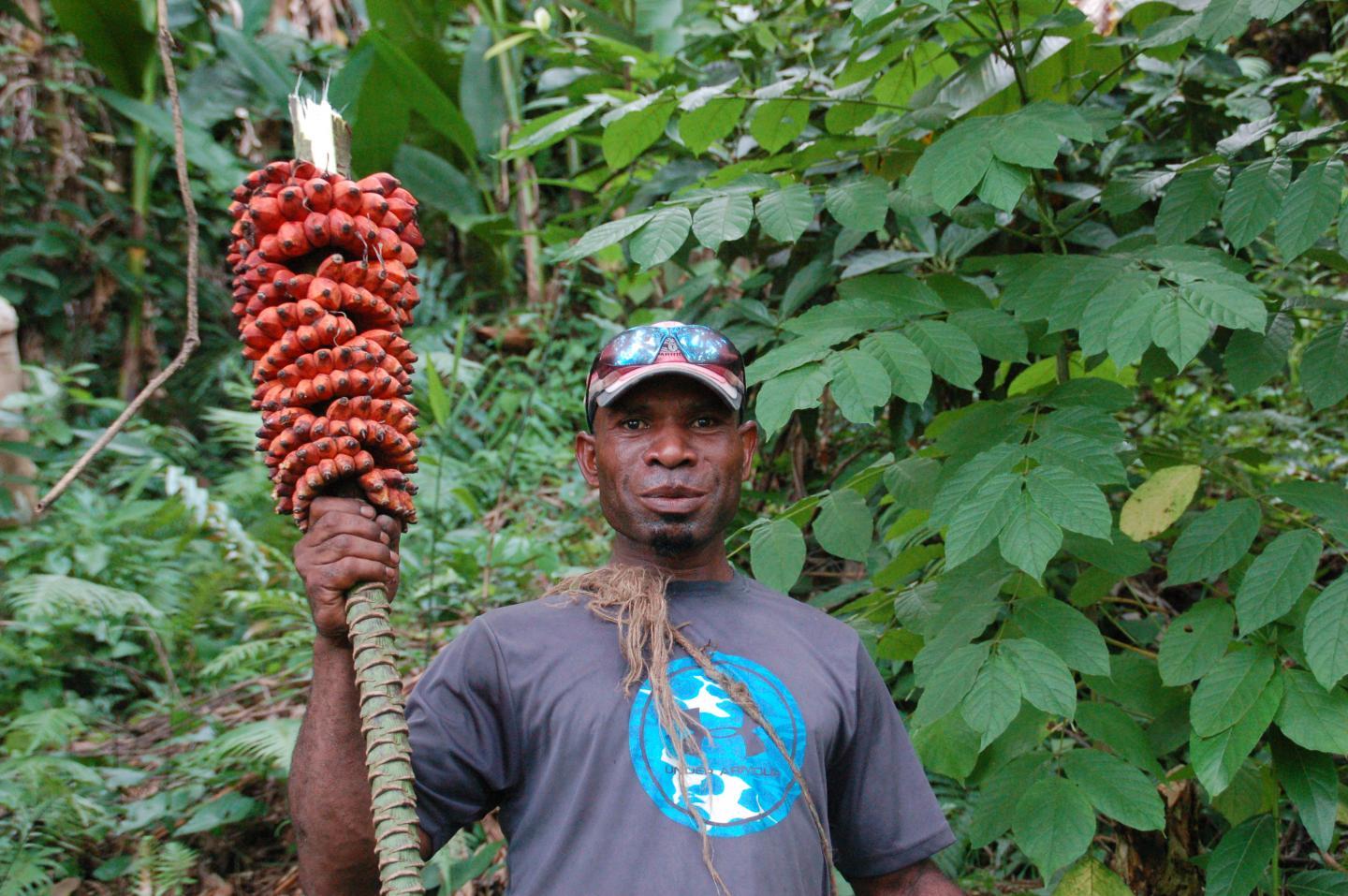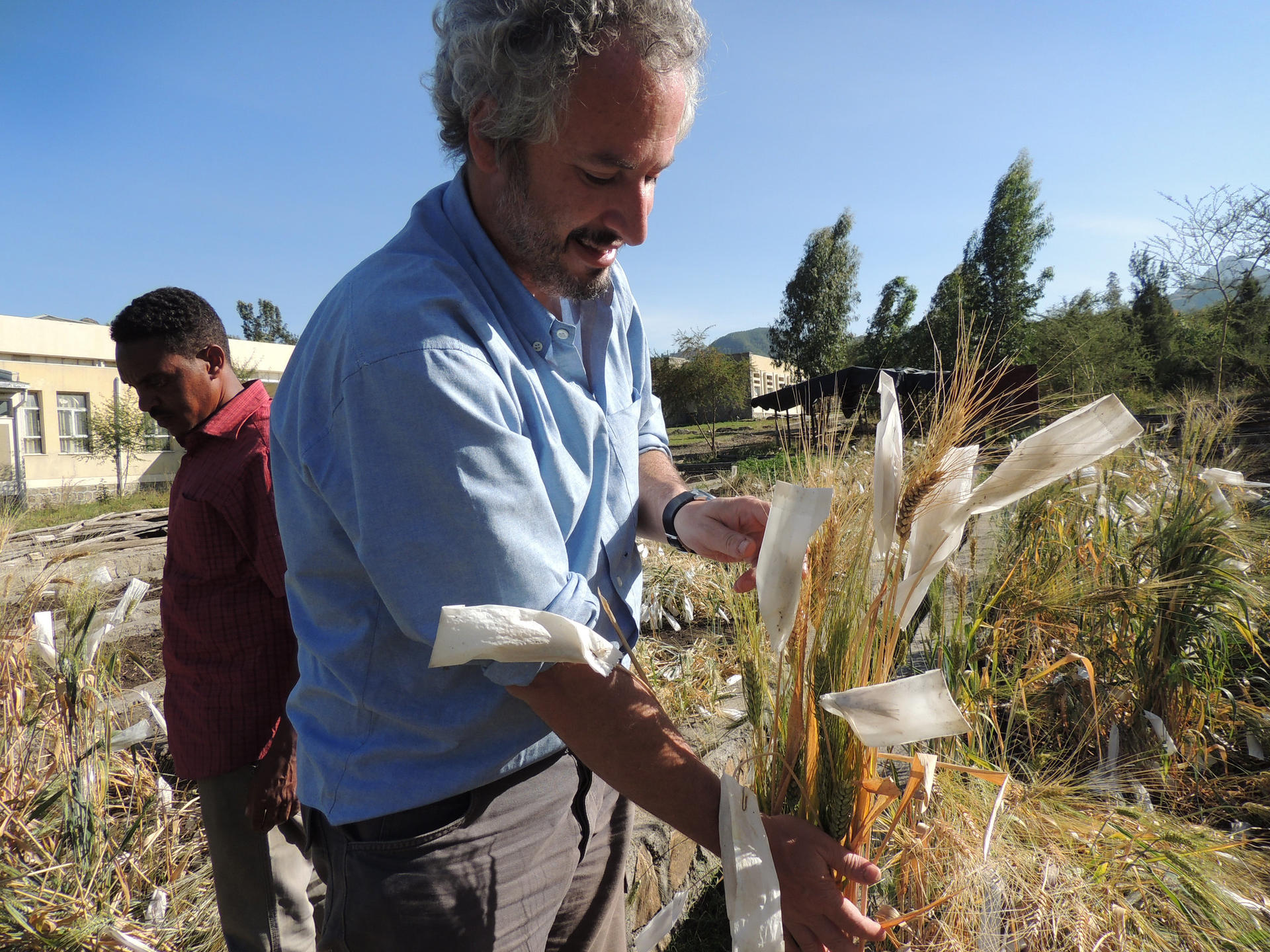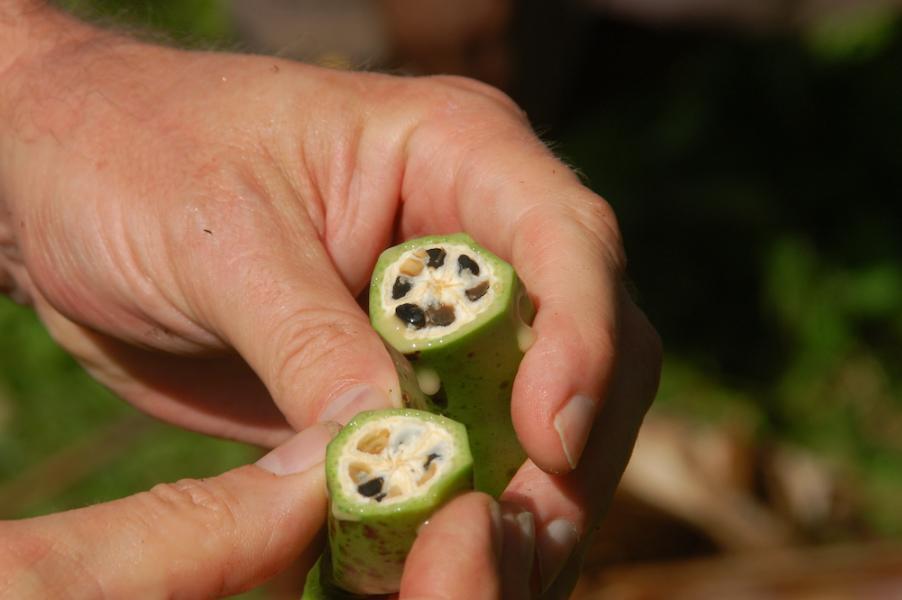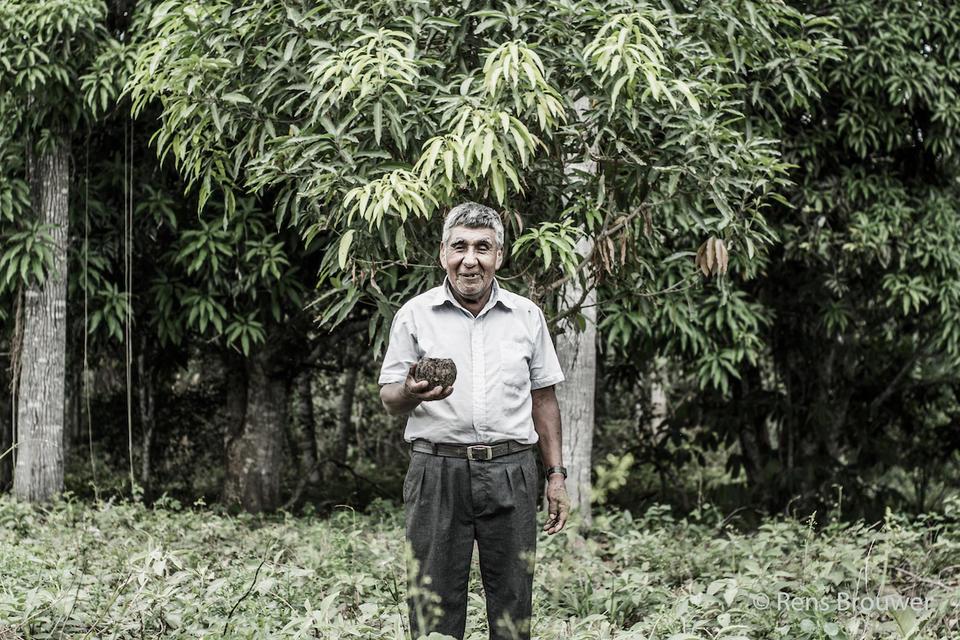2020 Annual Report Agricultural biodiversity is part of the solution, now more than ever

On the search for banana wild relatives in Papua New Guinea
S. Carpentier
Decades of scientific progress have enabled us to apply our expertise on safeguarding agrobiodiversity to improve food security, human, and planetary health. Our research agenda continues to evolve.
I joined the CGIAR in 2004 to research on-farm management of agricultural biodiversity. One of the first big questions we addressed was why farmers were confounding predictions that they would abandon their old landraces for new varieties produced by the Green Revolution. From Vietnam to Ethiopia, my colleagues and I observed that the traditional varieties preferred by farmers had desirable traits, including nutritional quality, adaptation to local conditions, and cultural desirability.
Our researchers amassed evidence that genetically diverse landraces – traditionally developed and grown by farmers – can supply nutrients to fight all forms of malnutrition, from obesity to wasting. Furthermore, diverse traits in crops and crop wild relatives can increase agriculture’s resilience to climate change.

For years, we have collaborated with farmers in Ethiopia to field test hundreds of wheat varieties.
Our job is more than finding and safeguarding plant genetic resources. We need to use agricultural biodiversity to enrich our food systems.
Increased urgency to conserve and use biodiversity
Key scientific outputs from the Alliance last year emphasize the role of agrobiodiversity in our global research agenda.
A study following eight years of in-kind rewards to farmers in Peru showed that up to 50% of the farmers maintain reintroduced native varieties on their farms once given access to seeds. This incentive program, “Payments for agrobiodiversity conservation services” (PACS), is now being funded by the Peruvian government. Other countries are considering similar frameworks.
Following farro, quinoa and rocket, teff may be the next ancestral crop to find its place back on our tables. But production of this nutritious Ethiopian grain is severely threatened by climate change. For the first time, scientists, in collaboration with farmers, mapped thousands of teff varieties to save, preserve and study them for climate-change resilience.
In another race against time, researchers published findings from a search for banana wild relatives in Papua New Guinea. A single banana variety – the Cavendish – dominates world markets, but it is threatened by the rapidly spreading global disease, Tropical Race 4 (TR4). Wild relatives, and the dozens of varieties developed by farmers and eaten across the Global South, may hold the disease-resistant traits needed to ensure a future with the world’s most popular fruit.

Papua New Guinea is home to the banana's wild, seeded ancestor. Credit: S. Carpentier
Evolving research and perspectives
In the 1990s, CGIAR pioneered research on how, why and where farmers developed and used diversity within and among crops. Devra Jarvis, who recently retired, was instrumental in establishing our program on on-farm biodiversity. Fellow emeritus Stefano Padulosi led the prioritization of underutilized crops.
Over the next decade, we predict a paradigm shift that places biodiversity at the center of nutrition and agriculture solutions, as well as exponential growth in the uptake of our evidence-based policy recommendations. Farmers will continue to be at the heart of our research agenda as custodians and architects of biodiversity conservation and primary beneficiaries.
Scientist Ehsan Dulloo, who spearheaded a South African network to understand and conserve the region’s crop wild relatives, says the relationship between farmers and genebanks is no longer “unidirectional,” with farmers’ materials being collected for posterity; now community and farmer seedbanks share materials back with farmers.
Diversity is key in combatting the risks of monoculture. With TR4, the world is now entering a “worst-case scenario” regarding banana production, says banana research leader Nicolas Roux, and we need diverse fields to combat the pandemic.
Diverse fields and landscapes rely on trees as a mainstream feature of agriculture systems, notes Chris Kettle, a specialist in forest genetic resources. Trees provide services to agricultural ecosystems, such as shade and more nutritious soils, and also edible products such as fruits.
The increased global attention on good health is accelerating food system transformation, says Michael Halewood, a policy expert. He says incentives and policies are necessary to “end the cheap calorie” – basically, junk food – in favor of a diverse, nutritious diet.
The world faces several concurrent crises: climate, malnutrition, environmental degradation and biodiversity loss. To meet development goals and biodiversity conservation targets, and improve human health through food, we must work on multiple fronts simultaneously. It is time for a major reorientation of the economic systems that drive poor diets and ecosystem destruction, towards sustainable practices that embrace agricultural biodiversity.

Diverse quinoa varieties grown by indigenous farmers in Peru. Credit: A.Drucker
Research Highlight
The next generation of biodiversity conservation targets must aim higher than ever
None of the global targets for the conservation of biological diversity were met by 2020. New targets, currently being discussed by countries under the Convention on Biological Diversity, will require a holistic approach and urgent action, argue researchers in the journal Science.
Read the press release and the paper.
More Research Highlights
Advocating for global targets including biodiverse food systems
The Alliance began 2020 by proposing milestones, in collaboration with the United Nations Environment Programme (UNEP), that ensure the recognition of diverse plant genetic resources for health and nutrition in the Post-2020 Biodiversity Framework.
Better health grows on trees
Tropical fruit trees can improve health, reduce hunger, boost incomes and fight climate change. So why don't we grow and eat more? The British Ecological Society published this paper, which had wide media impact.
Read the press release here.
Educating the next generation on agrobiodiversity
Collecting case studies from 75 contributors, the book Agrobiodiversity, school gardens and healthy diets made a compelling case for on-the-ground efforts to educate schoolchildren first-hand on biodiversity. Read the blog here.
Nourishing people with native foods
A new book collected seven years of project experience promoting local food biodiversity in Brazil, Kenya, Sri Lanka, and Turkey to outline best practices for collecting data, influencing policy, and raising awareness.
Read the blog here.
Imperiled Crop Wild Relatives
One of the Alliance’s top 2020 papers by Altmetric score outlined the variety and loss of North America’s crop wild relatives. Proceeding of the National Academy of Sciences published the research. Lead author Colin Khoury was featured in media including National Geographic and NPR.
Read the press release here.



